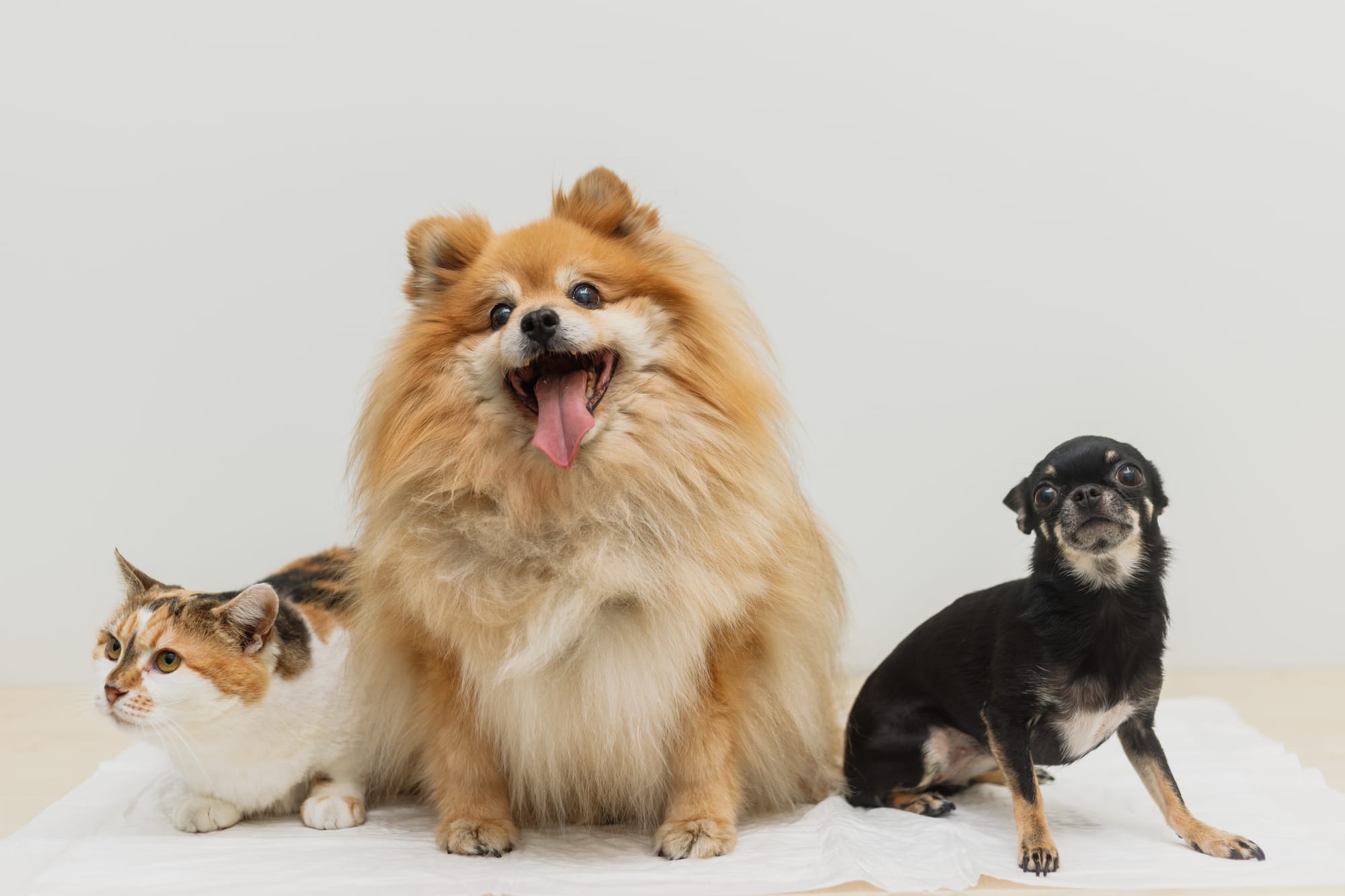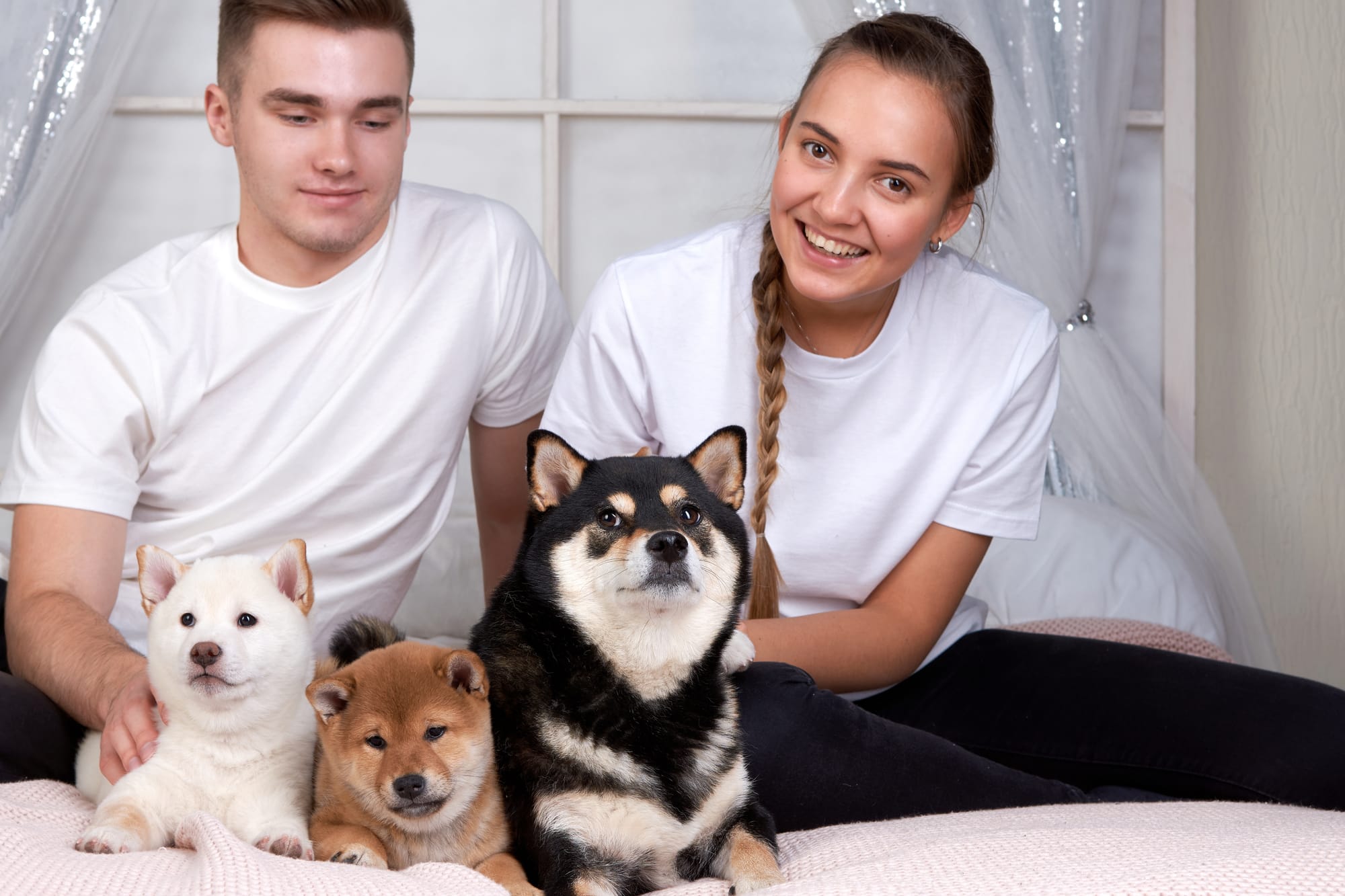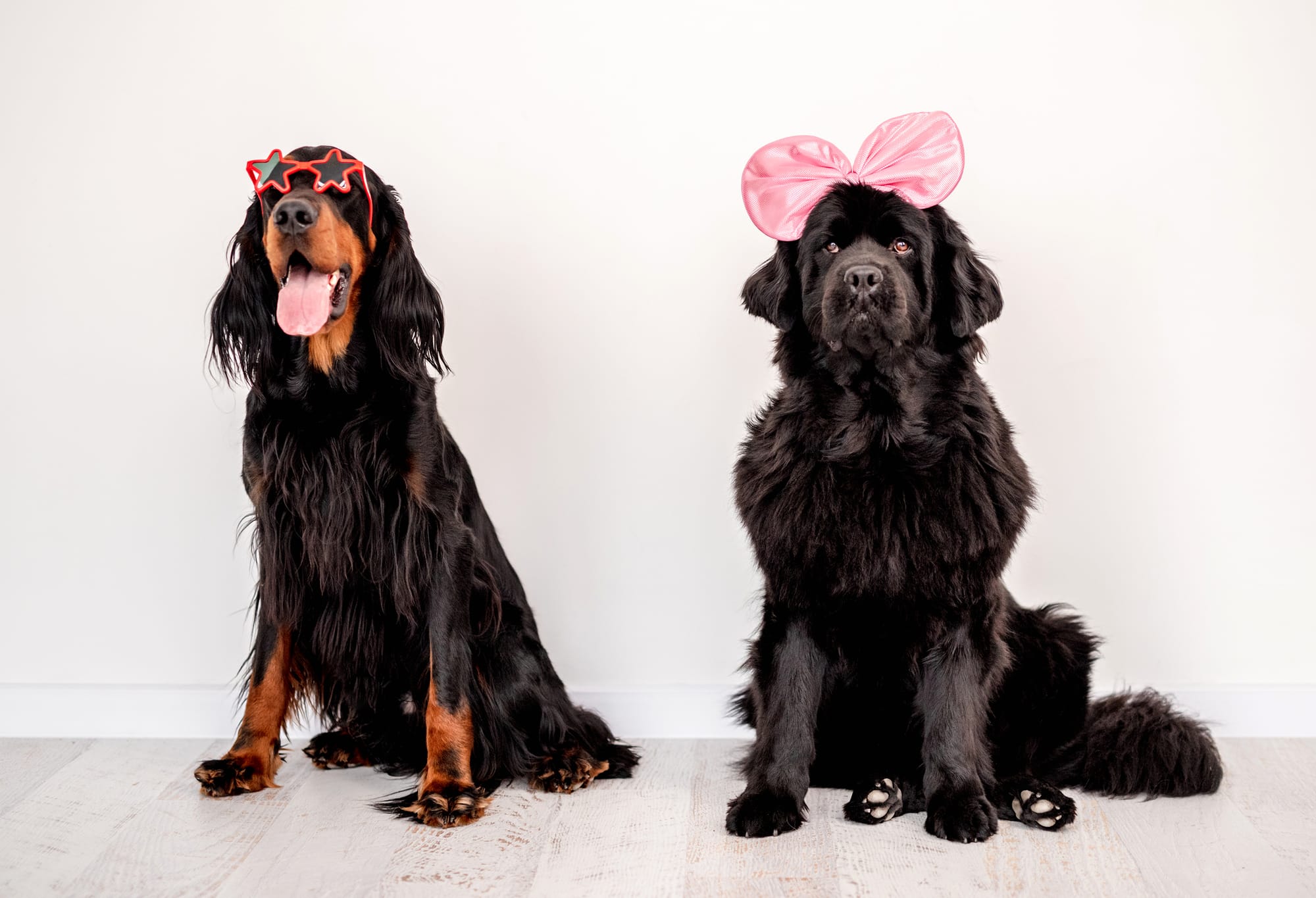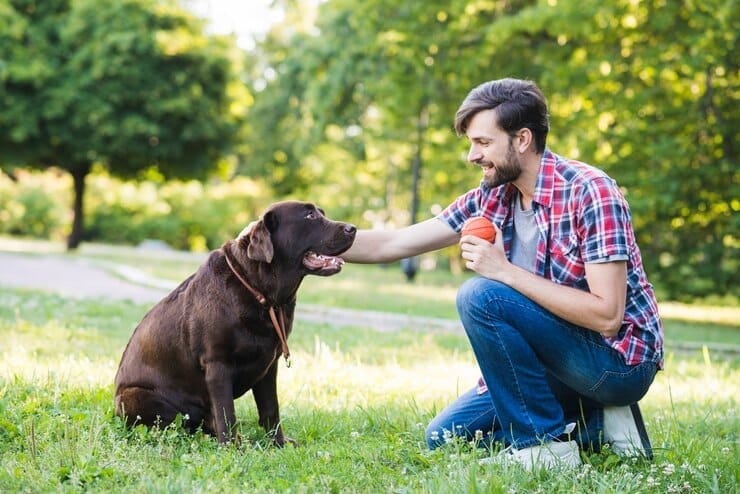Dogs have been dubbed "man's best friend" for good reason. They are loyal, friendly, and often adorable. Many people find themselves drawn to dogs, not only for their companionship but also for their cuteness. But why do we find dogs cute? What is it about their physical features and behavior that elicits such a strong emotional response in us?

Evolutionary biologists believe that humans have evolved to find certain features, such as large eyes and round faces, cute because they are associated with babies. This response triggers a nurturing instinct in humans, which helps ensure the survival of the species. When it comes to dogs, this instinct may be even stronger because dogs have been bred to retain juvenile traits, such as playfulness and dependence, into adulthood.
Key Takeaways
- Humans have evolved to find certain features, such as large eyes and round faces, cute because they are associated with babies.
- Dogs have been bred to retain juvenile traits, such as playfulness and dependence, into adulthood, which may make them even more appealing to humans.
- The emotional response to cuteness in dogs may have a positive impact on human well-being, including reducing stress and increasing social interaction.

Evolutionary Basis of Finding Dogs Cute
Humans have a strong affinity towards dogs, which is evident from the fact that they are the most common pet worldwide. The question arises, why do we find dogs cute? There are several reasons for this, including evolutionary and cultural factors. This section will focus on the evolutionary basis of finding dogs cute.
Baby Schema and Kinderschema
One of the primary reasons why humans find dogs cute is due to the baby schema or kinderschema. This term refers to the set of physical features that are present in babies and young animals, such as large eyes, round faces, and chubby cheeks. These features trigger an evolved biological response in humans, which is to care for and protect the young.
Research has shown that dogs possess many of these features, which makes them appear more juvenile and cute to humans. For example, dogs have large eyes, floppy ears, and a round face, which are all features that are associated with youthfulness and cuteness. Therefore, humans are naturally drawn towards dogs due to their baby-like appearance.
Domestication and Human Preferences
Another reason why humans find dogs cute is due to the process of domestication. Over thousands of years, dogs have been selectively bred to have certain physical and behavioral traits that are desirable to humans. These traits include loyalty, obedience, and cuteness.
Humans have a natural preference for animals that are easy to care for and provide companionship. As a result, dogs have become a popular pet due to their friendly and loyal nature. The cuteness of dogs has also played a significant role in their popularity as pets.
In conclusion, the evolutionary basis of finding dogs cute can be attributed to the baby schema and the process of domestication. Dogs possess many physical features that trigger an evolved biological response in humans, which is to care for and protect the young. Additionally, dogs have been selectively bred to have desirable traits that appeal to humans, including cuteness.

Biological Response to Cuteness
When it comes to dogs, it's hard not to find them cute. But why do we have this reaction to them? It turns out that there are biological reasons why we find dogs so adorable.
Oxytocin and the Love Hormone
One reason why we find dogs cute is due to the release of oxytocin, also known as the "love hormone." Oxytocin is a hormone that is released in the brain when we feel love, trust, and connection. Studies have shown that when we look at cute animals, including dogs, our brains release oxytocin, which makes us feel good and reinforces the bond between us and our furry friends.
Dopamine and Positive Emotions
Another reason why we find dogs cute is due to the release of dopamine in our brains. Dopamine is a neurotransmitter that is associated with feelings of pleasure and reward. When we see something cute, such as a puppy, our brains release dopamine, which makes us feel happy and reinforces the behavior of seeking out cute things.
Nurturing Instincts and Caregiving
Humans have a natural nurturing response to cute things, which is why we often feel the urge to take care of them. This response is thought to have evolved as a way to ensure the survival of our offspring. When we see a cute dog, our brains may interpret them as being in need of care and protection, which can trigger our nurturing instincts.
In conclusion, the reason why we find dogs so cute is due to a combination of biological responses in our brains. The release of oxytocin and dopamine, as well as our natural nurturing instincts, all contribute to our love for these furry creatures. Understanding the neuroscience behind our love for dogs can help us appreciate our bond with them even more.
Physical Features of Dogs That Elicit Cuteness
Dogs are often regarded as one of the cutest animals on the planet. Their physical features play a major role in eliciting this response. In this section, we will explore the different physical features of dogs that make them so adorable.

Facial Features and Expressions
One of the most prominent features of a dog's face is their big, expressive eyes. Dogs have larger eyes in proportion to their head size than most other animals, which makes them appear more innocent and vulnerable. Additionally, many dogs have a round face shape, which adds to their cuteness. Some breeds, such as the French Bulldog, have a brachycephalic skull shape, which means they have a flatter face, larger forehead, and shorter snout. This unique feature makes them look even cuter.
Dogs also have a variety of facial expressions that make them appear more endearing. For example, they can tilt their head, raise their eyebrows, and make puppy eyes, which are all behaviors that humans find adorable.
Body Shape and Proportions
Dogs have a unique body shape that contributes to their cuteness. They have a rounded body shape, which makes them appear softer and cuddlier. Additionally, many dogs have a large head in proportion to their body, which makes them look more baby-like. This combination of features triggers a nurturing instinct in humans, which makes us want to take care of them.
Breeds and Their Unique Traits
Different dog breeds have their own unique physical features that make them cute in their own way. For example, the Dachshund's long body and short legs make them look like they are always ready to play. The Bichon Frise's fluffy white coat and round ears make them look like a walking teddy bear. The Pug's wrinkly face and curly tail make them look like they are always smiling.
In conclusion, dogs' physical features play a significant role in why we find them so cute. Their big eyes, round body shape, and unique breed traits all contribute to their overall cuteness.
Behavioral Attributes Contributing to Cuteness
Dogs have long been considered one of the cutest animals on the planet, with their playful nature, wagging tails and emotional attachment to their owners. But what exactly makes them so adorable? In this section, we will explore some of the behavioral attributes that contribute to a dog's cuteness.
Playfulness and Antics
One of the most endearing qualities of dogs is their playful nature. They love to run around and play, often with their tongues hanging out and tails wagging. This playful behavior is not only fun to watch, but it also helps to create a strong bond between dogs and their owners. Dogs that are playful and energetic are often seen as more attractive to potential owners, as they are seen as being more fun and interesting.
Affection and Emotional Bonds
Dogs are known for their strong emotional attachment to their owners. They are loyal and affectionate, often seeking out their owners for attention and affection. This emotional bond is often reciprocated by their owners, who see their dogs as members of the family. Dogs that are affectionate and loving are often seen as more attractive to potential owners, as they are seen as being more caring and compassionate.
Loyalty and Protective Nature
Dogs are also known for their loyalty and protective nature. They will often go to great lengths to protect their owners, even putting themselves in harm's way. This loyalty and protective nature is often seen as a sign of strength and bravery, and is highly valued by potential owners. Dogs that are loyal and protective are often seen as more attractive to potential owners, as they are seen as being more reliable and trustworthy.
In conclusion, a dog's cuteness is often a combination of their playful nature, affectionate personality, and loyal and protective nature. These behavioral attributes help to create a strong emotional bond between dogs and their owners, making them one of the most beloved animals in the world.

Cuteness in Relation to Human Well-being
Dogs are often considered cute, and their cuteness has been linked to various benefits in humans. Cuteness can be defined as the quality of being attractive, charming, or endearing, and it can have a positive impact on human well-being. In this section, we will explore how cuteness is related to stress reduction, comfort, companionship, and overall well-being.
Stress Reduction and Comfort
Research has shown that looking at cute animals, such as dogs, can reduce stress levels and increase feelings of comfort. This is because looking at cute things can activate the reward centers in the brain, causing the release of dopamine, a neurotransmitter associated with pleasure and happiness. In addition, petting a dog can also lower blood pressure and heart rate, leading to a more relaxed state.
Companionship and Social Support
Dogs are known for their loyalty and companionship, and they can provide social support to their owners. Owning a dog can increase social interaction and reduce feelings of loneliness, especially for those who live alone. Dogs can also provide a sense of purpose and responsibility, which can be beneficial for mental health.
Overall, the cuteness of dogs can have a positive impact on human well-being, particularly in terms of stress reduction, comfort, and companionship. By providing social support and reducing feelings of loneliness, dogs can contribute to overall mental health and well-being.
Comparative Analysis of Cuteness
Dogs Versus Other Pets
Dogs are often considered one of the cutest pets, but how do they compare to other popular pets such as cats? According to a study conducted by the University of California, Los Angeles, dogs were rated as cuter than cats by both men and women. However, the study also found that women tend to rate cats as cuter than men do.
When it comes to cuteness, it's not just about physical appearance. Dogs are known for their loyalty and affectionate nature, which can also contribute to their overall cuteness factor. On the other hand, cats are often seen as more independent and aloof, which may not appeal to everyone's idea of cuteness.
Puppies Versus Adult Dogs
It's no secret that puppies are often considered one of the cutest things on the planet. But do adult dogs still hold up in the cuteness department? The answer is yes, but in different ways.
Puppies are cute because of their small size, round faces, and playful nature. They also have a certain level of vulnerability that can trigger nurturing instincts in humans. However, as puppies grow into adult dogs, they develop new traits that can also be considered cute. For example, some adult dogs have floppy ears or a unique coat pattern that adds to their charm.
In addition, adopting an adult dog from a shelter can also add to their cuteness factor. Giving a second chance to a dog in need can be heartwarming and endearing, making them even more lovable in the eyes of their new owner.
Overall, the cuteness of dogs versus other pets and puppies versus adult dogs can be subjective. However, there are undeniable qualities that make dogs a popular choice for pet owners seeking a cute and lovable companion.

Cuteness and Adoption
When it comes to adopting a dog, cuteness plays a significant role in the decision-making process. Shelter dogs that are considered cute are more likely to be adopted quickly than those who are not. This is because humans are naturally attracted to cute things, and dogs are no exception.
The cuteness of dogs is often associated with their vulnerability. Puppies, for example, are small, helpless, and innocent-looking, which makes them irresistible to humans. This vulnerability can also be seen in adult dogs, especially those who have been mistreated or abandoned. Dogs that are in need of a home and love are often seen as cute because they evoke feelings of compassion and empathy in humans.
Adoption is a crucial part of giving shelter dogs a second chance at life. When people adopt a dog, they are not only giving the dog a home, but they are also providing it with love, care, and attention. The cuteness of a dog can be a deciding factor for many people, but it is important to remember that adopting a dog is a long-term commitment. It is essential to consider the dog's personality, energy level, and needs before making a decision.
In conclusion, cuteness plays a significant role in the adoption of shelter dogs. Dogs that are considered cute are more likely to be adopted quickly, which is good news for the many dogs who are waiting for their forever homes. However, it is important to remember that cuteness should not be the only factor considered when adopting a dog. Adopting a dog is a long-term commitment, and it is essential to choose a dog that is the right fit for one's lifestyle and needs.
The Science of Cuteness
The science of cuteness is a relatively new field of study that has emerged in recent years. It is an interdisciplinary field that draws on neuroscience, psychology, and other related fields to understand why we find certain things cute, including dogs.
Neuroscience research has shown that when we see something cute, our brains release dopamine, a neurotransmitter associated with pleasure and reward. This release of dopamine creates a positive emotional response, which makes us feel good and encourages us to seek out more of the same thing.
Psychology research has also shown that certain physical features are associated with cuteness, such as large eyes, round faces, and small noses. These features are thought to trigger our innate nurturing instincts, which make us feel protective and caring towards the cute object.
Overall, the science of cuteness is still in its early stages of development, but it has the potential to shed light on why we find dogs so adorable. By understanding the underlying mechanisms of cuteness, we may be able to better appreciate and care for our furry companions.

Frequently Asked Questions
- Why do puppies elicit a strong sense of cuteness in humans?
- Puppies are generally perceived as cute due to their physical characteristics, such as their large eyes, round faces, and small size. These features resemble those of human babies, which may explain why puppies elicit a strong sense of cuteness in humans. Additionally, the playful and innocent behavior of puppies may also contribute to their cuteness.
- What characteristics make dogs appear adorable to us?
- Dogs have a range of physical and behavioral characteristics that make them appear adorable to humans. Some physical characteristics include their soft fur, wagging tails, and floppy ears. Behavioral characteristics that contribute to their cuteness include their loyalty, playfulness, and ability to show affection.
- Is there a psychological reason behind finding dogs cute?
- Yes, there is a psychological reason behind finding dogs cute. The human brain is wired to respond positively to certain physical and behavioral characteristics, such as those found in puppies and dogs. This response is thought to be related to the release of dopamine, a neurotransmitter associated with pleasure and reward.
- How do dogs' behaviors contribute to their cuteness?
- Dogs' behaviors, such as their wagging tails, playful nature, and affectionate behavior, contribute to their cuteness. These behaviors are often seen as endearing and make dogs more approachable and likable to humans.
- Do humans anthropomorphize dogs to perceive them as cute?
- Yes, humans often anthropomorphize dogs, attributing human-like qualities and emotions to them. This can contribute to the perception of dogs as cute, as humans tend to find anthropomorphized animals more relatable and endearing.
- What evolutionary advantages might dogs have gained by being cute to humans?
- It is believed that dogs gained evolutionary advantages by being cute to humans. By appearing adorable and likable, dogs were more likely to be domesticated and cared for by humans. This allowed them to access food, shelter, and protection, which ultimately increased their chances of survival.

